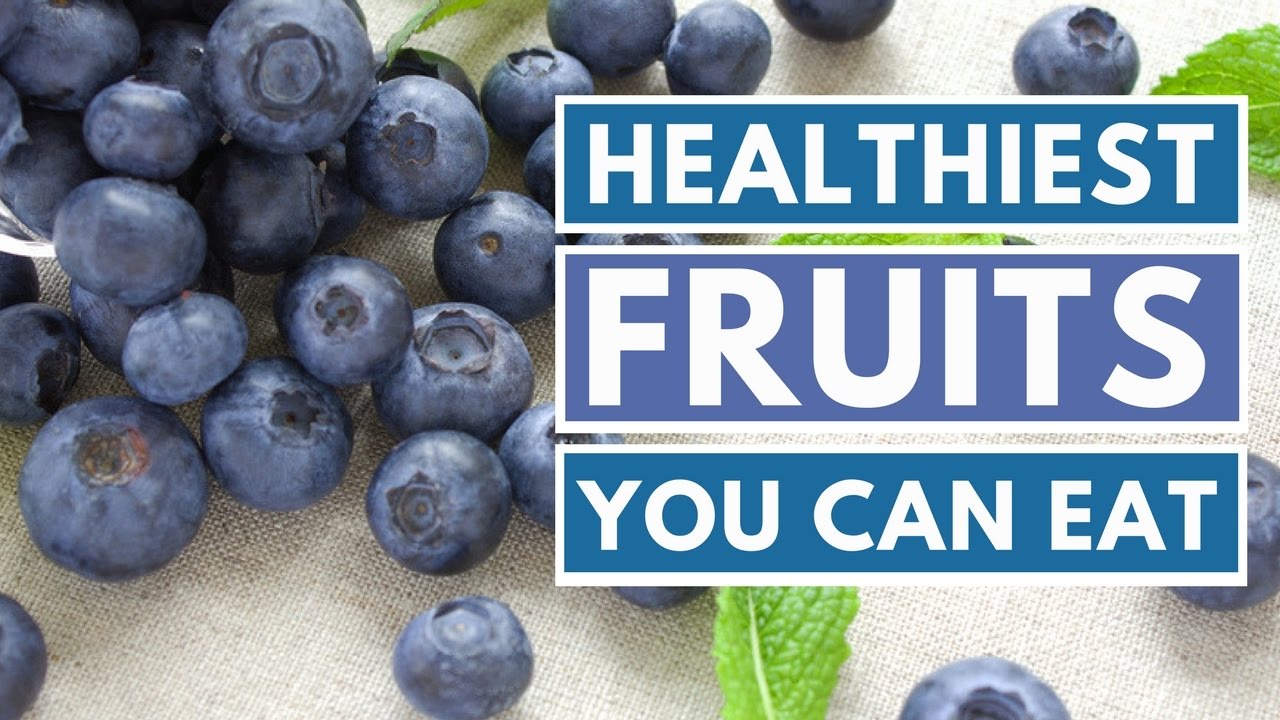
As the saying goes, "An apple a day keeps the doctor away."
Fruit is a highly nutritious, pleasant, and convenient complement to any diet, according to healthcare authorities.
You may be unsure which fruits to choose from among the more than 2,000 types available.
Each type of fruit has its own set of nutrients and healthadvantages to offer.
The idea is to consume a variety of fruits of different colors, as each color supplies a unique mix of beneficial nutrients.
What Fruit Is Recommended Daily?

6 Healthiest Fruits You Can Eat
Apples
Apples are by far the most popular fruits and are high in nutrients. Pectin, hemicellulose, and cellulose are among the soluble and insoluble fibers found in them.
These aid in the control of blood sugar levels, the promotion of normal digestion, and the maintenance of gut and heart health.
They're also high in vitamin C and plant polyphenols, which are disease-fighting substances that occur naturally in plants.
In fact, eating apples on a daily basis may reduce your chances of heart disease, stroke, cancer, being overweight or obese, and having neurological problems.
The majority of the polyphenols in apples are found just beneath the skin, so eat it whole to get the maximum advantages.
Blueberries
Antioxidant and anti-inflammatory effects of blueberries are widely established.
They're particularly high in anthocyanin, a flavonoid and plant pigment that gives blueberries their distinctive blue-purple color.
This chemical aids in the battle against disease-causing free radicals.
A diet strong in anthocyanins has been linked to a lower risk of type 2 diabetes, heart disease, overweight, obesity, high blood pressure, some types of cancer, and cognitive decline, according to numerous studies.
For example, a research with over 200,000 participants found that every 17 grams of anthocyanin-rich berries ingested per day reduced the incidence of type 2 diabetes by 5%.
Blackberries, bilberries, elderberries, cherries, and chokeberries are also strong in anthocyanins (8Trusted Source).
Oranges
Oranges are noted for having a high vitamin C content, with a single fruit supplying 91 percent of the daily value.
Potassium, folate, thiamine (vitamin B1), fiber, and plant polyphenols are all abundant (24Trusted Source).
Consuming whole oranges has been shown to reduce inflammation, blood pressure, cholesterol, and post-meal blood sugar levels in studies (24Trusted Source, 25Trusted Source).
Despite the fact that 100% orange juice contains a lot of nutrients and antioxidants, it frequently lacks dietary fiber.
Juices with pulp include more fiber than juices without it, therefore choose these over juices without it.
However, consume whole oranges more frequently and limit juice quantities to 1 cup (235 mL) or less per serving.
Papaya
The delicate, buttery flesh of the pear-shaped papaya, which is native to Central America, is complemented by peppery, edible seeds.
This delicious, musky fruit, which can grow up to 20 inches long but is usually around seven inches long, has 118 calories, a lot of vitamin C, and a lot of folate and potassium.
Papaya includes papain, a protein-digesting enzyme that is utilized in meat tenderizers.
Papayas can be eaten raw or cooked, with a splash of lemon or lime.
Mango
Mangoes are native to Southeast Asia and come in a variety of colors ranging from green to yellow to crimson.
Mangoes are low in calories and high in antioxidant vitamins A and C, potassium, and fiber.
Remove the skin, cut off the huge seed, and savor the rich, orange flesh, which is sweet and tropical in flavor.
Mangoes can be found in a variety of recipes, from sweet to savory, and are available fresh, frozen, or dried.
Pomegranate
Pomegranates, which are high in antioxidants and fiber, are available fresh in the fall.
The deep red fruit, about the size of an apple, is loaded with jewel-toned seeds held in place by a spongy membrane.
The seeds, which are sweet-tart and crunchy, are the only part of the plant that can be eaten.
Squeeze the seeds to make ruby red juice, or eat them plain with fruits, salads, or low-fat yogurt and sweets. A half-cup contains 80 calories.
Should You Eat Fruits Everyday?
Though eating healthily with very little or a lot of fruit is possible, the recommended amount is somewhere in the middle.
At least 400 grams of fruit and vegetables each day, or five portions of 80 grams, is usually recommended.
The fact that eating five servings of fruits and vegetables per day is linked to a lower risk of death from diseases including heart disease, stroke, and cancer is the basis for this guideline.
More than five servings per day showed no additional benefit, according to a thorough examination of 16 research studies.
Another systematic evaluation of 95 scientific studies indicated that 800 grams, or 10 daily servings, had the lowest illness risk.
Keep in mind that both fruits and vegetables were studied in these studies. If you assume that half of these servings come from fruit, you should eat two to five servings of fruit every day.
Different health agencies' recommendations differ slightly, but they all seem to be in line with current research.
The United States Department of Agriculture(USDA) recommends that individuals consume two servings of fruit per day, whereas the American Heart Association (AHA) suggests that adults have four to five servings per day.
